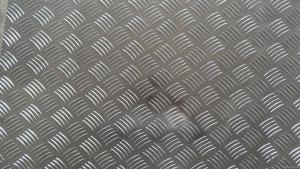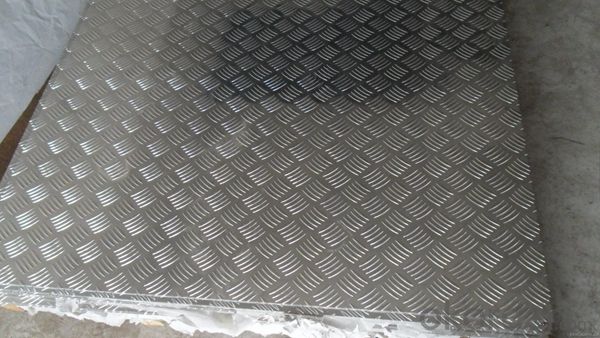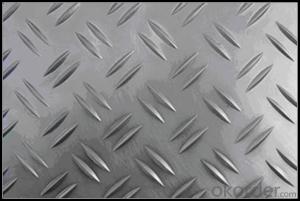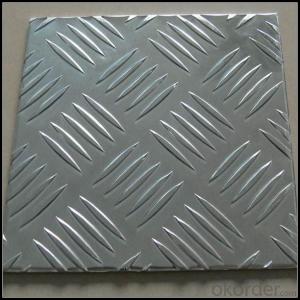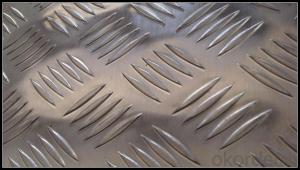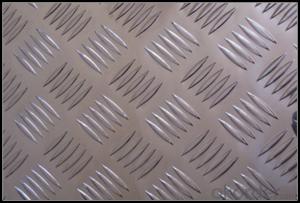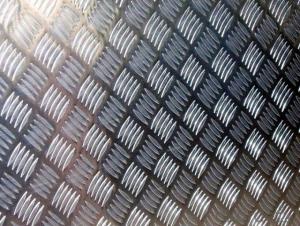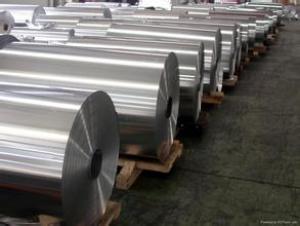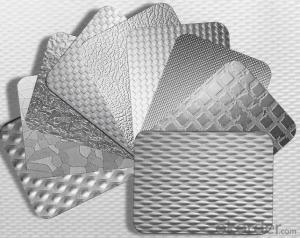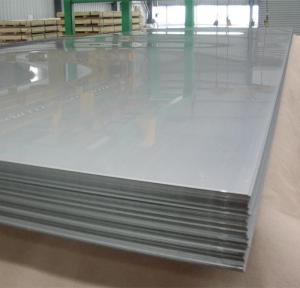Boat Building Aluminum Sheets - Mill Finish Five Bar Aluminium Treadplates 5052 HO
- Loading Port:
- Shanghai
- Payment Terms:
- TT OR LC
- Min Order Qty:
- 5 m.t.
- Supply Capability:
- 1000 m.t./month
OKorder Service Pledge
OKorder Financial Service
You Might Also Like
Specification
Mill Finish Five Bar Aluminium Treadplates 5052 HO for Boat
1.Structure of Mill Finish Five Bar Aluminium Treadplates 5052 HO for Boat
Aluminum Sheets are strengthened and cut from raw materials with different alloys, such as AA5005, AA5052, etc. They are easy for processing in different shapes, good in intensity and can be quickly installed. Aluminium Sheets for Energy Saving Curtain Walls are good in energy saving, weather resistance, fire resistance, easy for maintenance and with many colors.
Aluminium Sheets for Energy Saving Curtain Walls are widely used in construction of metal walls, metal ceilings, car decoration, advertizing panels, etc.
2.Main Features of Mill Finish Five Bar Aluminium Treadplates 5052 HO for Boat
•High intensity
•Easy to be processed and shaped
•Weather resistance
•Anti-pollution & environment protection
3. Mill Finish Five Bar Aluminium Treadplates 5052 HO for Boat Images
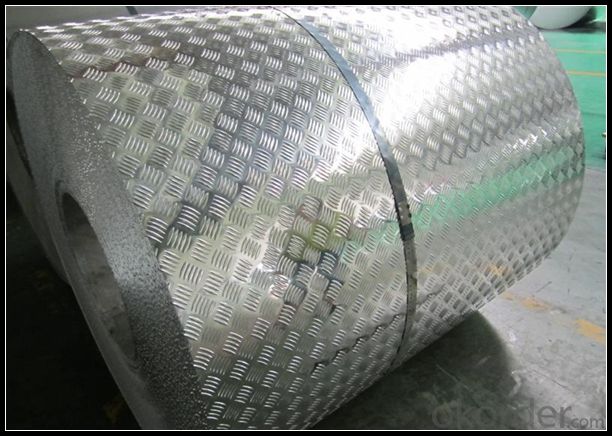
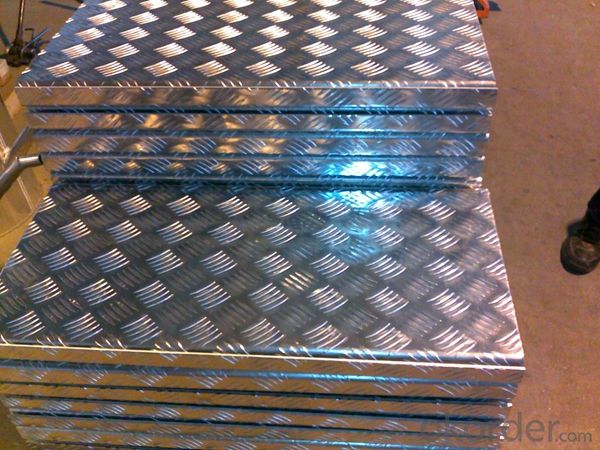
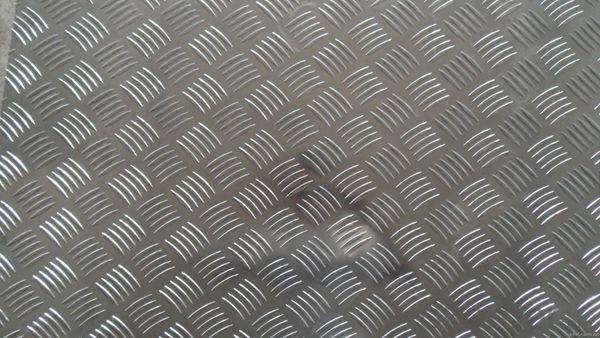
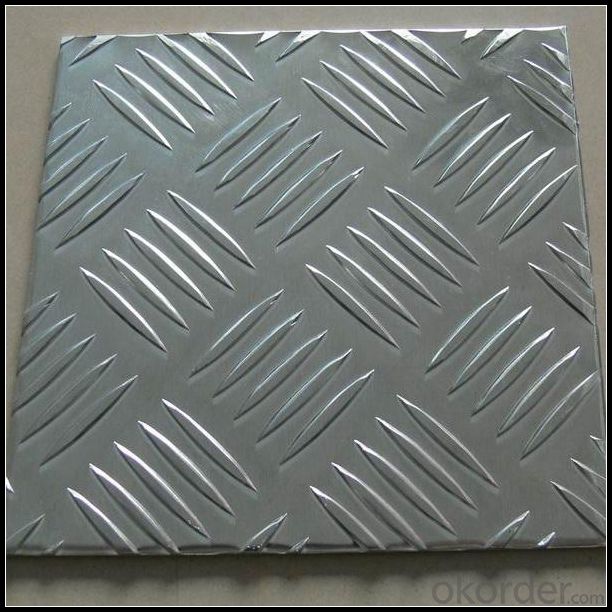
4.Specification of Mill Finish Five Bar Aluminium Tread Plates 5052 HO for Boat
Alloy Number | AA5XXX |
Temper | H12, H14, H16, H18, H22, H24, H26, H32, HO, F |
Thickness | 0.1mm – 500mm |
Width | 10mm- 2200mm |
Standard | GB/T3880-2006, ASTM, ISO, EU standard |
5.FAQ of Mill Finish Five Bar Aluminium Treadplates 5052 HO for Boat
A.What about inspections to guarantee quality?
For each order for Aluminum Sheets with Mill Finished Surface AA5XXX, we will arrange strict inspection for raw materials, inspection during production and inspection for finished goods.
With requirement of customers, we also can arrange the third party inspection.
B.What about delivery?
We will put order for Aluminum Sheets with Mill Finished Surface AA5XXX in production schedule after order gets confirmed against copy of TT or L/C. Normally it takes about one month for production. Exact shipment schedule is different based on different sizes and quantity.
C.What is the MOQ?
5 tons for each size.
D. Where have you exported aluminium sheets?
We have exported aluminum sheets to many countries. Main markets include South East Asia, Middle East, North America, South America, etc.
- Q: Are 101 aluminum sheets suitable for cryogenic applications?
- No, 101 aluminum sheets are not suitable for cryogenic applications.
- Q: Why must the aluminum oxide be electrolyzed in a molten cryolite solution?
- To electrolyse aluminium oxide, it has to be molten. However, the melting point of Al2O3 is extremely high ( 1000°C), and that would make the electrolysis very inefficient. However, Al2O3 dissolves in cryolite at much lower temperatures (lower than 900°C), which makes it a much more viable process.
- Q: This question asks if aluminum sheets can be recycled repeatedly without losing their quality.
- <p>Yes, aluminum sheets can be recycled multiple times without losing their quality. Aluminum is a highly recyclable material, and the recycling process does not degrade the material's properties. In fact, recycled aluminum requires significantly less energy to produce compared to mining and refining new aluminum from bauxite ore. This makes aluminum recycling an environmentally friendly and cost-effective process, contributing to sustainability and reducing the demand for raw materials.</p>
- Q: What is the typical hardness of aluminum sheets?
- The typical hardness of aluminum sheets can vary depending on the specific alloy and tempering process used, but it generally falls within the range of 40-70 on the Rockwell B scale.
- Q: How do aluminum sheets perform in terms of wear resistance?
- Aluminum sheets generally offer good wear resistance due to their inherent properties and surface characteristics. Aluminum is a lightweight yet durable material that exhibits a high strength-to-weight ratio, making it suitable for various applications where wear resistance is required. The wear resistance of aluminum sheets can be further enhanced through various methods such as alloying, heat treatment, and surface treatments. Alloying elements like copper, magnesium, or zinc can be added to aluminum to improve its hardness and wear resistance. Heat treatment processes like precipitation hardening can also increase the strength and wear resistance of aluminum sheets. Furthermore, surface treatments such as anodizing or applying protective coatings can significantly enhance the wear resistance of aluminum sheets. Anodizing forms a protective oxide layer on the surface of aluminum, providing increased resistance to abrasion, corrosion, and wear. Coatings like powder coatings or paint can also provide an additional layer of protection against wear and tear. In terms of specific applications, aluminum sheets are commonly used in industries such as automotive, aerospace, construction, and marine due to their excellent wear resistance. They are utilized in components that experience sliding, rubbing, or impact, such as panels, body parts, and structural elements. Overall, while aluminum sheets may not possess the same level of wear resistance as certain steel alloys or other specialized materials, they offer a good balance between strength, weight, and wear resistance. With appropriate alloying, heat treatment, and surface treatments, aluminum sheets can provide satisfactory wear resistance in a wide range of applications.
- Q: How do aluminum sheets compare to other metals in terms of strength?
- Compared to other metals, aluminum sheets typically possess lower strength. Although aluminum is lightweight and exhibits excellent corrosion resistance, it lacks the same level of strength as steel or titanium. In terms of tensile strength and yield strength, aluminum falls short when compared to these metals, rendering it more susceptible to deformation and failure when subjected to heavy loads. Nevertheless, by alloying aluminum with other elements, its strength can be enhanced, allowing certain aluminum alloys to compete with or even surpass the strength of certain other metals. Furthermore, aluminum's strength-to-weight ratio stands as one of its primary advantages, making it the preferred choice in industries where weight reduction is critical, such as aerospace and automotive. All in all, while aluminum may not possess the highest level of strength among metals, its combination of strength, lightweight properties, and corrosion resistance renders it an adaptable material for various applications.
- Q: Are aluminum sheets suitable for use in cryogenic environments?
- Certainly, aluminum sheets prove to be a fitting choice for utilization in cryogenic surroundings. With its exceptional thermal conductivity and low density, aluminum emerges as an optimal substance for cryogenic purposes. It can endure exceedingly cold temperatures while maintaining its structural integrity and avoiding noticeable thermal expansion. Moreover, aluminum exhibits commendable resistance against corrosion and can be conveniently fashioned into diverse configurations and sizes. These attributes render aluminum sheets widely employed in cryogenic systems, including cryostats, superconducting magnets, and liquid nitrogen storage tanks.
- Q: Are aluminum sheets suitable for roofing?
- Indeed, aluminum sheets prove to be a fitting choice for roofing purposes. Renowned for its lightweight nature, durability, and corrosion resistance, aluminum stands out as a favored material in the roofing industry. Moreover, its non-combustible properties render it a safer alternative. The ease of installation and maintenance further add to its appeal, as do its ability to withstand adverse weather conditions like heavy rain, snow, and wind. Notably, aluminum also earns accolades as an environmentally conscious option, boasting 100% recyclability. In summary, aluminum sheets offer a trustworthy and enduring roofing solution for both residential and commercial edifices.
- Q: Are aluminum sheets resistant to staining?
- Yes, aluminum sheets are generally resistant to staining due to their natural ability to form a protective oxide layer on the surface, which prevents corrosion and staining.
- Q: Can the aluminum sheets be used for manufacturing door frames?
- Indeed, door frames can be manufactured using aluminum sheets. Aluminum, a versatile material, finds extensive usage in the construction field owing to its robustness, longevity, and lightweight nature. It can be conveniently molded, curved, and joined through welding processes to fashion door frames of diverse dimensions and styles. Furthermore, aluminum possesses exceptional resistance against corrosion, rendering it suitable for both indoor and outdoor applications. In conclusion, employing aluminum sheets for the production of door frames represents a sensible and widely favored option within the construction sector.
Send your message to us
Boat Building Aluminum Sheets - Mill Finish Five Bar Aluminium Treadplates 5052 HO
- Loading Port:
- Shanghai
- Payment Terms:
- TT OR LC
- Min Order Qty:
- 5 m.t.
- Supply Capability:
- 1000 m.t./month
OKorder Service Pledge
OKorder Financial Service
Similar products
Hot products
Hot Searches
Related keywords
